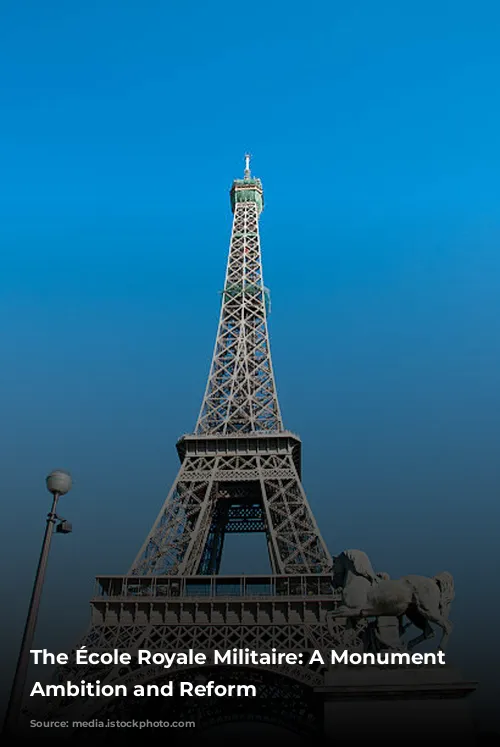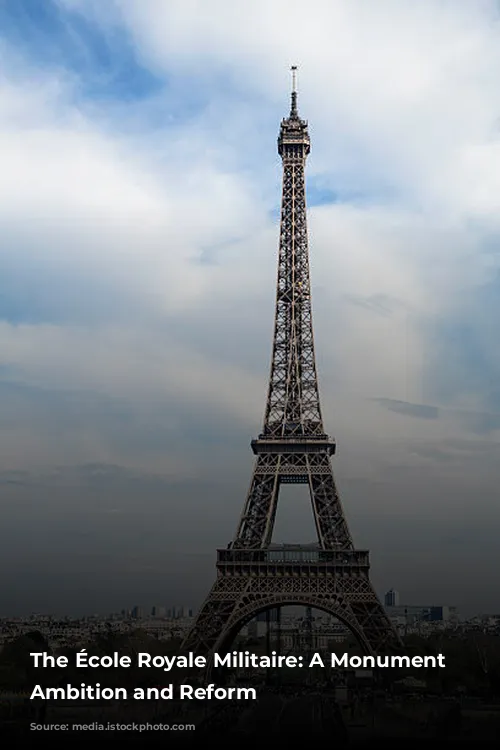The École Royale Militaire, established in Paris in the 18th century, was a testament to the ambition of those who sought to create a new kind of military education. This thesis delves into the ideas, processes, and challenges that shaped this institution.

A School Built on Ideas and Institutions
Inspired by the creation of the girls’ school at Saint-Cyr in 1686, the École Royale Militaire aimed to professionalize military training, emphasizing technical skills and knowledge. It drew inspiration from centuries-old ideas and institutions, but also incorporated contemporary innovations in education and military strategy.
The establishment of the school was not without its challenges. It faced near-closure, numerous reforms, and ultimately, failure.

The École’s Selection Process: A Reflection of Power and Status
The École’s admission process was a microcosm of the societal debates surrounding nobility and merit. Prospective candidates were assessed based on their lineage, financial status, and military background. This system reflected the complex tensions between the traditional privileges of the nobility and the growing demand for professionalism and competence in the military.
Emulation: Fostering Excellence Through Competition
The École’s founders believed in emulation as a powerful tool for motivation and improvement. By creating a system where students competed for recognition and advancement, the institution hoped to inspire excellence and dedication in its pupils.
From Verona to Modena: A Military School’s Transformation
The Collegio Militare di Verona, founded in 1759, was a pioneering institution in the Venetian Republic. It aimed to produce skilled officers equipped with technical and scientific knowledge, responding to the evolving landscape of warfare. This institution reflected the European trend towards modernizing military education.
The School’s Legacy: A Bridge Between Eras
When the Venetian Republic fell, the Collegio Militare moved to Modena, becoming part of the Napoleonic army. This transition highlighted the school’s adaptability and resilience. It remained a source of skilled officers for the Italian army throughout significant political and social upheavals.
The Higher School of Agriculture of Mograne: A Vision of Modernity
The Higher School of Agriculture of Mograne, built in Tunisia between 1947 and 1952, was a shining example of modern architecture and a symbol of progress and change. Designed by Jean Pierre Ventre, the school embodied the ideals of the Modern Movement, incorporating functional design, geometric aesthetics, and integration with the natural environment.
A Legacy of Modernity: Preserving and Protecting Mograne
Despite its historical significance, the Mograne school has faced neglect and deterioration. The need for urgent action to rehabilitate and reconvert its abandoned spaces is crucial to preserving this valuable architectural and cultural heritage.
Paris in the Late 14th Century: An Architectural Renaissance
The court of the Valois Kings fostered a cultural renaissance in Paris during the late 14th century. This period witnessed the construction and renovation of numerous buildings, including the Bastille, the Louvre, the Palais de la Cité, and the Hôtel Saint-Paul.
A Tapestry of Construction: Royal Patronage and Architectural Achievement
The royal princes and leading figures of the time, including Jean, Duke de Berry, Philip the Bold, Louis of Anjou, Louis of Orléans, Beauvais, and La Grange, played a vital role in this architectural revival. They commissioned and supported projects that showcased power, prestige, and the artistic spirit of the era.
The Valois dynasty left an indelible mark on the architectural landscape of Paris, showcasing the power of patronage, artistic innovation, and the enduring influence of historical events on our built environment.
